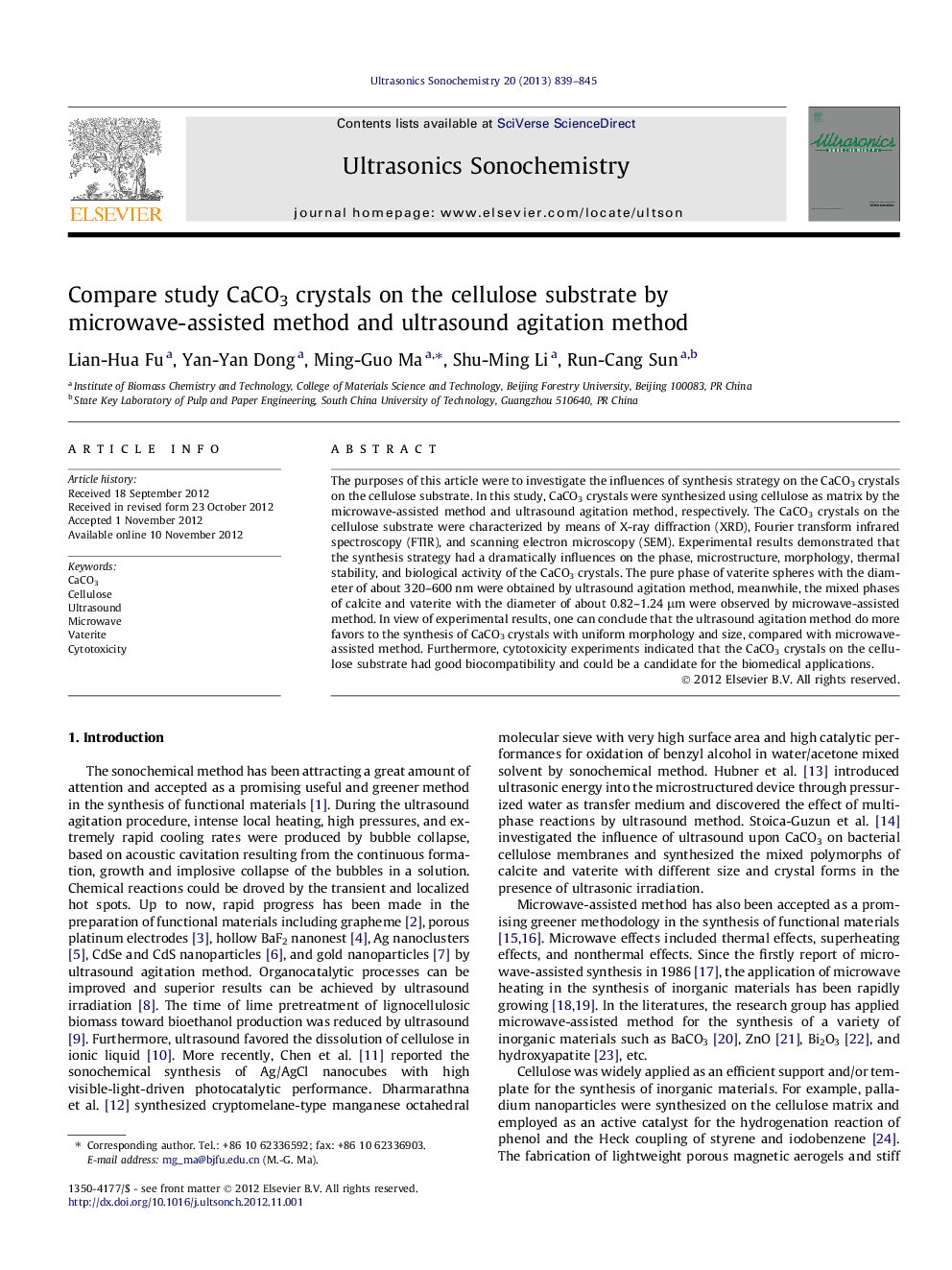| Article ID | Journal | Published Year | Pages | File Type |
|---|---|---|---|---|
| 1265268 | Ultrasonics Sonochemistry | 2013 | 7 Pages |
The purposes of this article were to investigate the influences of synthesis strategy on the CaCO3 crystals on the cellulose substrate. In this study, CaCO3 crystals were synthesized using cellulose as matrix by the microwave-assisted method and ultrasound agitation method, respectively. The CaCO3 crystals on the cellulose substrate were characterized by means of X-ray diffraction (XRD), Fourier transform infrared spectroscopy (FTIR), and scanning electron microscopy (SEM). Experimental results demonstrated that the synthesis strategy had a dramatically influences on the phase, microstructure, morphology, thermal stability, and biological activity of the CaCO3 crystals. The pure phase of vaterite spheres with the diameter of about 320–600 nm were obtained by ultrasound agitation method, meanwhile, the mixed phases of calcite and vaterite with the diameter of about 0.82–1.24 μm were observed by microwave-assisted method. In view of experimental results, one can conclude that the ultrasound agitation method do more favors to the synthesis of CaCO3 crystals with uniform morphology and size, compared with microwave-assisted method. Furthermore, cytotoxicity experiments indicated that the CaCO3 crystals on the cellulose substrate had good biocompatibility and could be a candidate for the biomedical applications.
► The influences of synthesis strategy on the CaCO3 crystals were researched. ► Vaterite spheres were obtained by ultrasound agitation method. ► Thermal stability of the samples was investigated. ► CaCO3 crystals on the cellulose substrate had good biocompatibility. ► Ultrasound agitation method favors the synthesis of CaCO3 crystals.
